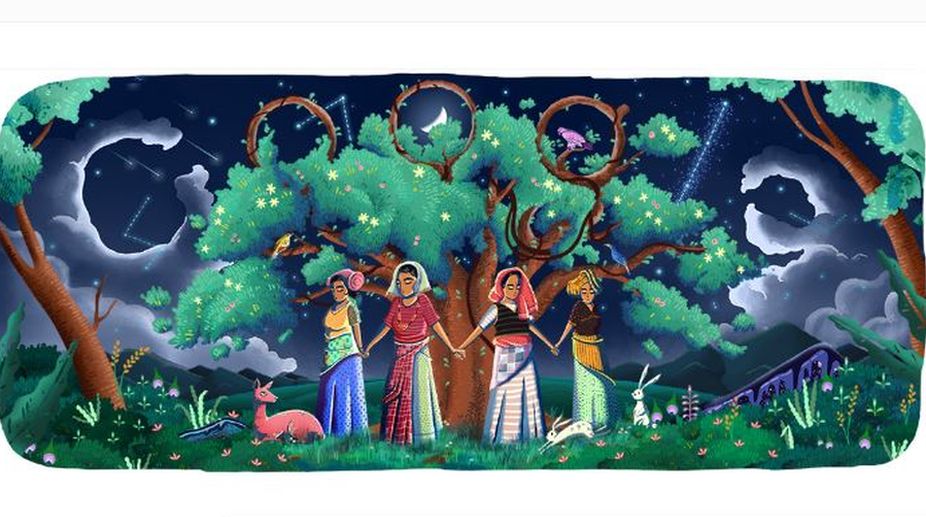The spirit of Chipko needs to be revived
Some years back in a series of highly inspiring actions, Himalayan villagers in many parts of what is now present day Uttarakhand prevented the axing of forest trees.
Not many know the original Chipko Movement dates back to the 18th century

The Google Doodle has been illustrated by Svabhu Kohli and Viplov Singh.
The year 2018 marks the 45th year of the Chipko Movement or Chipko Andolan witnessed in the hills of Uttar Pradesh (now in Uttarakhand) to protect the regional forests from loggers. The success of the struggle in 1973 inspired many future environmental movements across the world, creating a precedent for starting nonviolent, grassroots resistance.
The movement derives its name from the expression of ‘embrace’ in Hindi, as the protesters protected the trees by hugging them and physically preventing the loggers from touching them. “Chipko” literally means “to stick”. It was earlier called “angalwaltha”, the Garhwali word for “embrace”.
Advertisement
Google celebrated the day with a Doodle illustration by Svabhu Kohli and Viplov Singh, in memory of the movement and those involved in it.
Advertisement
Not many people, however, know the original Chipko Movement dates back to the 18th century, when a crowd of people, 363 to be precise, belonging to the Bishnoi community living in 84 different villages of Rajasthan, led by Amrita Devi, sacrificed their lives to protect a group of khejri trees that were to be cut down at the order of the maharaja of Jodhpur. After this event, the king had decreed that the trees were to be left standing.
The Chipko Movement of 1730 AD can be called a women’s movement, remembered for mobilisation of women for the cause of preserving forests. In the movement seen in the last millennium, both male and female activists from Uttarakhand — Gaura Devi, Sudesha Devi, Bachni Devi and Chandi Prasad Bhatt to name a few — played vital roles, but women the backbone this time too as they were the ones most affected by rampant deforestation, which led to a lack of firewood and fodder as well as water for drinking and irrigation.
Some other names are also associated with the movement for giving it a proper direction. The most prominent among them is Sunderlal Bahuguna, a Gandhian activist and philosopher whose appeal to the then Prime Minister Indira Gandhi resulted in a 15-year ban on felling of green trees in the Himalayan forests in 1980. The Chipko slogan of “ecology is permanent economy” had been coined by Bahuguna.
Another name was Ghanasyam Raturi whose songs are still popular in the Himalayan villages of Uttarakhand.
Explaining its doodle, Google quotes a poem by Raturi about the Chipko movement of the 1970s that describes the method of embracing the trees to save them from felling.
“Embrace the trees and
Save them from being felled;
The property of our hills,
Save them from being looted.”
Advertisement